
Arquivo para a ‘Cognition’ Categoria
Inform, symbol and connect
What was missing in the text of Crisis of Narration, there is also something wrong in “Infocracy: digitalization and the crisis of democracy in philosophy” (2022) of Byung-Chul, the idea that information is in itself incomplete, is present in another book entitled Vita Contemplativa (ed. Vozes, 2023) because there, returning to being, one can find how form becomes narration within being, and becomes in-form.
there is also something wrong in “Infocracy: digitalization and the crisis of democracy in philosophy” (2022) of Byung-Chul, the idea that information is in itself incomplete, is present in another book entitled Vita Contemplativa (ed. Vozes, 2023) because there, returning to being, one can find how form becomes narration within being, and becomes in-form.
An excerpt from this book says: “The loss of shared feeling accentuates the lack of being. The community is a symbolically mediated totality. The symbolic narrative void leads to the fragmentation and erosion of society.” (HAN, 2023, p. 91-92). (emphasis added)
Thus recognizing this aspect of the need for being as a symbolic void, which the contemporary narrative in general does not contemplate due to its informational vices, at the same time the author states: “The human being, as a symbolon, longs for a sacred and restorative totality” (page 92).
The term symbolon appears prominently because the author uses it based on a reading of Plato’s Banquet, where Aristophanes remembers that this broken piece of being, which for him was initially spherical and was broken, has this broken piece with a “symbol”.
Now if symbol is a part, united to another part we form a totality, not just in a community, but in every “sacred and restorative totality”, where there are men united for a good and just cause.
Narrative and information in this context, where the part is united, as an important principle defended by Edgar Morin said: “It is necessary to replace a thought that isolates and separates with a thought that unites and distinguishes”, thus the union of distinct “symbols” and that are part of contemporary cultures and peoples.
Thus, the ontological information (proper to being) linked to the context of the narration in its time and the object of thoughts within a diversity, are not a reason for fragmentation but rather for a universe that unites us and makes us more “whole” within our lives. communities.
Contemporary hyperactivity, which not only but also the digital world can lead us to, is itself a world that rejects internalization, meditation and thus, narration itself.
The author writes about this interiority: “Active life, with its pathos of action, blocks access to religion” (page 154), action is part of religious life as much as lay life, what differentiates is that in addition to prudence, our reflections from last week, can lead to a different, fair action that leads to happiness and fulfillment different from pure “action”.
Pathos, to clarify, is part of the Greek triad “ethos, pathos and logos”, while ethos persuades us through character, or by whoever narrates, if this is worthy of faith, logos persuades us through logical (broad) reason and pathos by feelings caused by sadness or joy, love or hate, and so often without going through reason and ethics.
HAN, Byung-Chul. (2023) Vita Contemplativa or about inactivity. Trans. Lucas Machado. Brazil, Petrópolis: Vozes.
Unitas multiplex, networks and the beatitudes
Among the main concepts developed by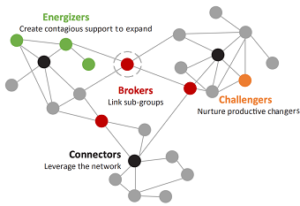 Edgar Morin are cosmic Dasein (similar to Heidegger’s Dasein but expanded to the cosmic and similar to Teilhard Chardin’s Cosmic Christ), hominization and human identity, which is also linked to anthropolytic, but a fundamental and new is Unitas Multiplex.
Edgar Morin are cosmic Dasein (similar to Heidegger’s Dasein but expanded to the cosmic and similar to Teilhard Chardin’s Cosmic Christ), hominization and human identity, which is also linked to anthropolytic, but a fundamental and new is Unitas Multiplex.
According to Jean Ladriére Unitas Multiplex is “a system is a complex object, made up of distinct components joined together by a certain number of relationships”, and this both combines with the concept of social networks (not media) and Morin’s complexity, and Here we will establish a set of relationships with the biblical virtues of the beatitudes.
In a complex system, a certain number of relationships may be broken, what in social networks are called “structural holes” (Burt, 1992), weak ties (Granovetter, 1973) and small worlds of Duncan Watts (1998)
A system represented as a social network is a structure that connects nodes (forms a mathematical graph), generally each of these nodes are people, and links between nodes, representing relationships between these people (GRANOVETTER, 1973).
For Granovetter, bridges are links that enable weak ties, those that are on the periphery of the network or that are only reached by some nodes.
But neither the network theory nor the unitas multiplex theory establish the virtues that enable greater contact between these nodes, and as all these nodes can be reached, talking about empathy and bonds of solidarity is little, the biblical beatitudes can help.
Jesus climbs a mountain and speaks to a crowd of people, not just the disciples but everyone who wants to hear him (Mt 5:3-12):
“Blessed are the poor in spirit, for theirs is the Kingdom of Heaven. Blessed are the afflicted, for they will be comforted. [the weak ties]
Blessed are the meek, for they will possess the earth. Blessed are those who hunger and thirst for righteousness, for they will be satisfied. [the strong ties]
Blessed are the merciful, for they will obtain mercy. Blessed are the pure in heart, for they will see God. [empathy]
Blessed are those who promote peace, for they will be called children of God. Blessed are those who are persecuted for the sake of righteousness, for theirs is the Kingdom of Heaven!
Blessed are you when people revile you and persecute you and falsely say all kinds of evil against you because of me. Rejoice and be glad, for your reward will be great in heaven” [keeping the net united to the mystical body or “cosmic dasein”].
It seems heroic, or utopian, but if we want a peaceful Homeland, it’s a good recipe.
BURT, R. S. The social structure of competition. In: NOHRIA, N.; ECCLES, R. G. Networks and organizations: structure, form and action. Boston: Harvard Business School, 1992.
GRANOVETTER, M. S. The strength of weak ties. American Journal of Sociology, Chicago, vol. 78, no. 6, p. 1360-1380, May 1973.
WATTS, D. J.; Strogatz, S. H. (1998). “Collective dynamics of ‘small-world’ networks” (PDF), NATURE, VOL 393, 4 June.
About the modern and God
If it is true that the religious discourse of our days borders on insanity, it is also true that what modernity thought and still thinks about God is practically unknown.
Born to a family of Lutheran pastors, Nietzsche did not speak of the Death of God as his shallow reading thinks, they did not read the Gay Science where the philosopher proclaims “The mad man – You have not heard of that mad man who in the middle of the morning lit a lantern and ran to the market , and began to cry out incessantly: ‘I’m looking for God! I’m looking for God!’?” drink the sea entirely? Who gave us the sponge to erase the horizon? What have we done, in untying the earth from its sun? Whither is it moving now? Whither are we moving?'” is in §125.
He sought in the philosophy of the East: Thus spoke Zarathustra the lost mystique, but his work The Birth of Tragedy has striking passages where he shows the need to understand this way of understanding life, where he makes studies on the Apollonian and the Dionysian, where chapter 5 it is believed that this is where Heidegger starts to write the Origin of the Work of Art.
From Husserl’s Influence were born the philosophies of Heidegger and Edith Stein, who later became mystic, being Jewish became Christian and was a martyr in Nazi Germany, still under the influence of Heidegger is Hannah Arendt, whose doctoral thesis is “Love in Santo Agostinho”, although there are gaps that his contemporaries attest, it is a good read.
From Hannah Arendt came the meditations on Vitta Activa and Vitta Contemplativa, which the contemporary philosopher Byung Chul Han will take up again in his Society of Tiredness, not forgetting to touch on the Christian philosophy of Saint Gregory of Nazianzus (or Nazianzen).
He was strongly influenced by Peter Sloterdijk, who despite his atheism, in all his works the deep marks of the knowledge of Christian thought, claims the prophet Jonah to say that we all have a whale (Jonas when refusing his mission was devoured by a whale and returned to the beach) and a little Jonas, refuses our mission on this planet.
Byung Chul Han makes a very current diagnosis, he adds that the “modern loss of faith, which concerns not only God and the beyond, but reality itself, becomes radically transitory human life” (Han, p. 42) .
This is not a separate problem, it is an essential part of modern thought, refusal of the essential, adoption of the transitory, fleeting and frivolous life and of fleeting and ecstatic pleasures.
Han, Byung Chul. (2015) Burnout Society. Ed. Stanford Briefs; 1ª ed., Stanford, USA.
Limits and importance of testimony
The men who gave a great turning point in history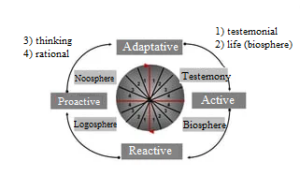 and who made a difference in their time were those whose testimony influenced and often changed the course of history, what seemed inevitable was avoided, what seemed lost was clarified.
and who made a difference in their time were those whose testimony influenced and often changed the course of history, what seemed inevitable was avoided, what seemed lost was clarified.
It doesn’t mean that they didn’t think and reason, but that they witnessed and lived first.
Mahatma Gandhi unleashed civil disobedience in his country, India, to encourage the struggle for the country’s independence from England, on August 15, 1947 it was won with violence being practiced only by the British colonizers.
Everyone knows Martin Luther King’s peaceful fight, but it was the gesture of a black woman who triggered his fight, the woman named Rosa Parks, who in Alabama, in 1st. In December 1955, she refused to give up her seat on a bus to a white man, she was arrested and forced to pay a $14.00 bail.
Nelson Mandela after leaving prison, and leading the end of the racist regime of “apartheid”, in 1994 becomes the first black president of South Africa, instead of “taking revenge” on whites, he proposes a new attitude, contrary to of the dominators and recreates South Africa with racial tolerance and the presidents that followed him were all black, in a demonstration that won the fight and disarmed his persecutors.
There is talk of the miracle of the loaves, but the most important thing follows later in the biblical narrative in Matthew 14, 22-24, he had dismissed the crowd that had eaten the loaves, the disciples got into the boat and Jesus withdrew to pray alone, then went walking to the disciples over the sea.
The disciples are frightened by this image, they say “it is a ghost”, but He says: “it is I”, Peter also wants to walk on the water, Jesus calls him, but he sinks, weak in faith, the witness not only requires truth and experience, but also a belief and cannot be distant from it.
More than the miracle of bread that satisfies the body, Jesus wants the miracle of faith, which satisfies the soul.
The clearing, the unveiling and Being
The clearing is a small space with light that opens up in the middle of the forest, Heidegger defines it in the philosophical sense as follows: “Destiny appropriates itself as the clearing of being, which is, as clearing. It is the clearing that grants the proximity of being. In this proximity, in the clearing of making room, man lives as an ex-sistent, without him being able to experience and assume this dwelling” (Heidegger, 1979), in this sense, the being appropriates a true and eternal “dwelling”.
opens up in the middle of the forest, Heidegger defines it in the philosophical sense as follows: “Destiny appropriates itself as the clearing of being, which is, as clearing. It is the clearing that grants the proximity of being. In this proximity, in the clearing of making room, man lives as an ex-sistent, without him being able to experience and assume this dwelling” (Heidegger, 1979), in this sense, the being appropriates a true and eternal “dwelling”.
The clearing is then the place of unveiling the Being, in its temporality of ex-sistent it experiences, due to its finite condition, a pleasant and sensitive dwelling, almost eternal, however temporary as an entity.
So the clearing comes from the human condition, and it is not just the divine Theophany, however the biblical narrative gives the human and temporal Jesus at a specific moment on Mount Tabor, we have already posted something on the subject, but in the sense of the asceticism of the soul, here one wishes to complete it in an unveiling.
As we posted earlier, it is possible both to reveal and to unveil human beings, in the first case a temporary understanding that is revealed (clarifies, but new doubts remain) and unveiling, often partially incomprehensible to human beings due to their cognitive finitude or a mystical asceticism whose details are often difficult to communicate due to the absence of appropriate words or metaphors, like a work of art.
In the biblical narrative, it is on Mount Tabor where a theophany occurs, it was not in the baptism of Jesus nor in the miracles that it happened, when climbing the mountain Jesus takes three closer disciples: John, Peter and James and before their eyes he is transfigured and appears next to Moses and Elijah, says the narrative (Mt 17. 2-3):
“And he was transfigured before them; his face shone like the sun and his clothes became white as light. Then Moses and Elijah appeared to them, talking with Jesus.”
The apostles feel the “clearing” and want to stay there and build three tents, then a cloud covers them, as in the tabernacle of Moses, they hear a divine locution and they prostrate their faces to the ground, Jesus calms them down and when they raise their eyes they see only Jesus and go down the mountain.
For non-believers, the biblical narrative is imaginary, but it helps to understand the unveiling.
Heideggger, Martin. (1979) “O fim da filosofia e a tarefa do pensamento”. In: Os pensadores. São Paulo: Abril Cultural, 1979, p. 79 (in portuguese).
Heidegger, M. (2003) The End of Philosophy, transl. Joan Stambaugh, 1st Edition, Univ. Chicago Press, USA.
The noosphere and oral culture
The period of oral culture predominated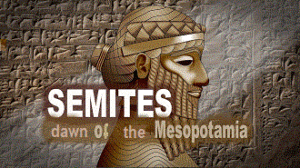 before 3000 BC, although there were scribes in Egypt, cuneiform writing in Mesopotamia and ancient Babylon, there was also writing in Ancient China and also in the civilizations originaries in the Americas: Mayans, Aztecs and Incas.
before 3000 BC, although there were scribes in Egypt, cuneiform writing in Mesopotamia and ancient Babylon, there was also writing in Ancient China and also in the civilizations originaries in the Americas: Mayans, Aztecs and Incas.
The form of dissemination of culture and, therefore, of the evolution of the noosphere was through prophets and oracles, whose main function was the transmission of oral culture and preceded literate and philosophical teaching, until we have a more notable turn in Greco-Jewish culture -Roman.
In biblical terms, according to Genesis reports, using genealogies presented in the bible, we can say that it is at least 6 thousand years old, but if we understand the narrative, Abel was a shepherd and Cain was a farmer, so this narrative begins at the moment when man becomes more sedentary and the civilizing process becomes clearer, the fact that Abel is a shepherd is symbolic for biblical language.
If this is a fact without historical proof and also Noah and the flood are still an eternal search for documentation, however their sons Shem and Ham can already be found in history, since the Semitic and Hamite peoples are registered in history, and Jafé who was to dwell in the tents of Shem.
The Semites were the dawn of the Mesopotamian cultures that peaked in Babylon (1792–1000 BC) and were later dominated by the Persians.
Prophets and oracles will be fundamental in ancient cultures, they should have a certain “divine” illumination so that history does not get corrupted and customs are changed.
According to Genesis 11, from the Flood to Abraham passed about 292 years, and from the birth of Abraham to the settlement of Jacob in Egypt passed about 290 years, ‘from Abram to the coming of Christ is about 2000 years, and then begins an era of written culture, and thus the gospels appear while in ancient Greece the Socratic and Platonic schools, since we know of Socrates through Plato and then the Aristotelian school, period that the schools and writings are fixed.
It is not about overcoming oral culture, but it appears together with writing, handwritten books, which later became famous for copyist monks, this period is called scriptorium.
Oral culture remains with native peoples, also among African peoples, printed writing will be a conquest of modernity, so to speak of schooling is to speak of modernity, and now we are in a new transition due to new media.
Vain and humble
The word vanity has its origin in the Latin term, vanus, which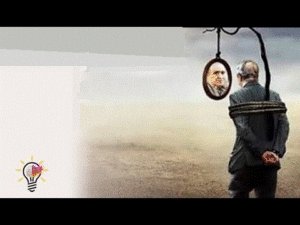 means vain, empty.
means vain, empty.
In general, it is said that the opposite of vanity is modesty, simplicity, but it is confusing vain with proud, pride imagines that everyone depends on its presence and qualities, but the vain needs flatterers and subservient.
I prefer to say that the opposite of vanity is humility, which comes from humus, the fertilizer from which fertility springs, the humble person knows his shortcomings and therefore grows in his smallness and attains more wisdom than the vain person who has difficulty seeing his limitations.
The reason for the confusion of the word humility is that there is a synthetic absolute superlative that is very humble, this indeed indicates a low condition, obscurity and poverty, but look at its superlative, or its exaggeration, the humble knows that he also has qualities.
Mutual correction is always possible for growth, the vain person does not know this, as Exupéry says: “but the vain person did not listen. The vain hear nothing but praise.”
That is why the vain person, typical of our time, enjoys the consumption of full freedom without restrictions, Byung-Chul Han in his analysis of psychopolitical power states: “Today, power increasingly assumes a permissive form. In its permissiveness, or rather in its affability, power puts aside its negativity and passes itself off as freedom.”
It’s easy to recognize the vain ones: they like to sit in the front row, they are always arrogant in their truths and positions, they don’t look to the Other and to the side, and in the case of religions they think they are saints, privileged or uniquely loved by the divine.
Any cultural or religious literature demonstrates that this is a source of errors and a stagnation in the development of people and society, it is the inverse of the civilizing process, as it is the inability to correct routes and errors.
Cholera and phobia, results of civilizing malaise
It may seem sugary or even childish, Freud says the opposite, that we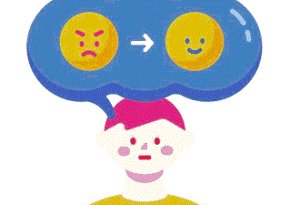 adopt more reflective and tolerant attitudes in the face of difficulties.
adopt more reflective and tolerant attitudes in the face of difficulties.
The Greeks knew that without self-control men could surrender to two paralyzing poles: deimos and phobos (terror and fear).
Adam Smith, whose thinking influenced modern economics including Marx, also wrote The Theory of Moral Sentiments, that self-mastery is fundamental in the face of a terrifying situation, and sets out two modes of self-mastery.
He theorizes that “acting in accordance with the dictates of prudence, justice and appropriate beneficence, seems to have little merit if there is no temptation to act otherwise”.
We should be educated to the ability to undertake self-control in the face of pathós (affections of the soul) where we must highlight our greatest virtues, or we will succumb to vexatious processes and hateful vices, and, incredible as it may seem, it already dominates most social media, reaching to the highest courts in the country.
According to the author, the second group of passions over which we should exercise self-control, lead to the context of “the love of peace, pleasure, applause and many other selfish satisfactions”.
So if we compare those of the first with those of the second group, it might seem easier to master them, as these inclinations allow us some minimal time for reflection; at least, more than when we are attacked by fear and anger (first group), however we experience the context of immediate reactions or paralysis, without realizing that these extremes touch each other.
If we give in to all impulses, if we give little time or space to reflection, silence and even the cultivation of interiority, what we express is almost always lacking in empathy, and at the opposite extreme, anger and barbarism remain.
Emotional intelligence has developed methods that suggest how to control your emotions and help you more easily recognize when it improves your relationships and empathy.
Smith, Adam. The Theory of Moral Semtiments, first Ed. 1759.
Dualism and unity
Dualism comes from Parmenides’ idealism and reaches Hegel, we have already posted in its categories in-itself, of-itself and for-itself, being for-itself a certain return to in-itself.
already posted in its categories in-itself, of-itself and for-itself, being for-itself a certain return to in-itself.
There are two types of dualism: substance dualism and property dualism. While substance dualism (or Cartesian dualism) argues that the mind is an independently existing substance, property dualism describes a category of positions in philosophy of mind that advocate that, although the world is constituted by only one type of substance, of the physical kind, there are two distinct types of properties: physical properties and mental properties.
This quarrel within dualism continues on the separation of substance and mind, whether as substance or property.
Unity is possible if we think beyond the logical ontology of Parmenides where Being is and non-being is not, there is a Being that is not, that is present in the soul, and that in the trinitarian sense is a Being-for-itself, that is is a for in the sense of beyond, in this case beyond the substance, and if we think of Absolute God (using the Hegelian category) the for-itself is substance and materializes in the “son” of the Trinity who is Jesus, being-in – himself man and being-for-himself God.
Thus God enters history and substance as mind and property, what the French theologian and paleontologist Teilhard de Chardin calls the noosphere, which is the subtitle of this blog.
God mind and property enters history and eternalizes himself as a substance in body and blood, with the substances bread and wine, which are human artifacts, the wheat made bread by man and the grape made wine by man, thus human substance, deified and eternalized at the supper of Jesus, this is the feast of the Body of Christ held today by most Christians.
In Chardanian reasoning, God removed the universe from its sub-instance, which is also God, from the body of Christ, so the whole universe is Christocentric and penetrated by His divinity.
The human attempt to create an intelligent and beyond-human “being” is an ex-machina incapable of being for-itself.
This is how Trinitarian and human unity is achieved, it is necessary to pass through the non-Being that is Being, it is necessary to overcome contradictions and go beyond oneself, to enter a divine and eternal for-itself.
Civilization and dissent
There is “An Evil in Civilization” wrote Sigmund Freud in 1929, after his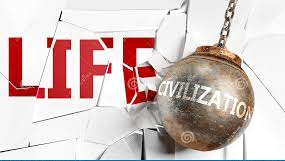 appeal reached where he predicted the 2nd. World War, at this moment extrapolates the cultural and is almost exclusively psychic, reason and high thinking are not in fashion, values are inverted, what remains is the couch.
appeal reached where he predicted the 2nd. World War, at this moment extrapolates the cultural and is almost exclusively psychic, reason and high thinking are not in fashion, values are inverted, what remains is the couch.
At a time like this, everything around us gets worse, it’s not just the economy and politics, spending on medicines and doctors increases, educational and justice capabilities are distorted in defenses and accusations with the help of lawyers or public defenders without changing the course of dissent, the time and content for educating dialogue, criteria and reason is reduced.
Also in the educational and social areas; the excess of actions and attempts at models, which are motivated by misunderstandings on both sides, theoretical models and teaching methods, live with the difficulty of facing dissent and often result in the total loss of hierarchy or sense of value, the difficulty of accept (or exercise) what would be authority.
At the same time that authority is confused with authoritarianism, disorganizes the school mission and often prevents public discourses of discussion and responsible dialogue from being exercised, values, even spiritual ones, collapse, everything seems to collapse in a cascade.
Sometimes all that remains is to listen and remain silent, sometimes it is necessary to correct with courage, but dialogue is always possible, and patient listening ponders even when it differs.
It takes models that correspond to life, to ethical and moral social interaction, to save empathy and mutual respect, when only some want respect that they do not offer to others, there is no way to start a fruitful dialogue process.
There are niches of civilizing coexistence, there are peoples and places where dissent has not settled, where hatred has not won and hope still lives.
Finding and giving value to these little lights that illuminate the civilizing night is fundamental, otherwise doctors, psychiatrists and educational methods will not be functional, they will have no life.

